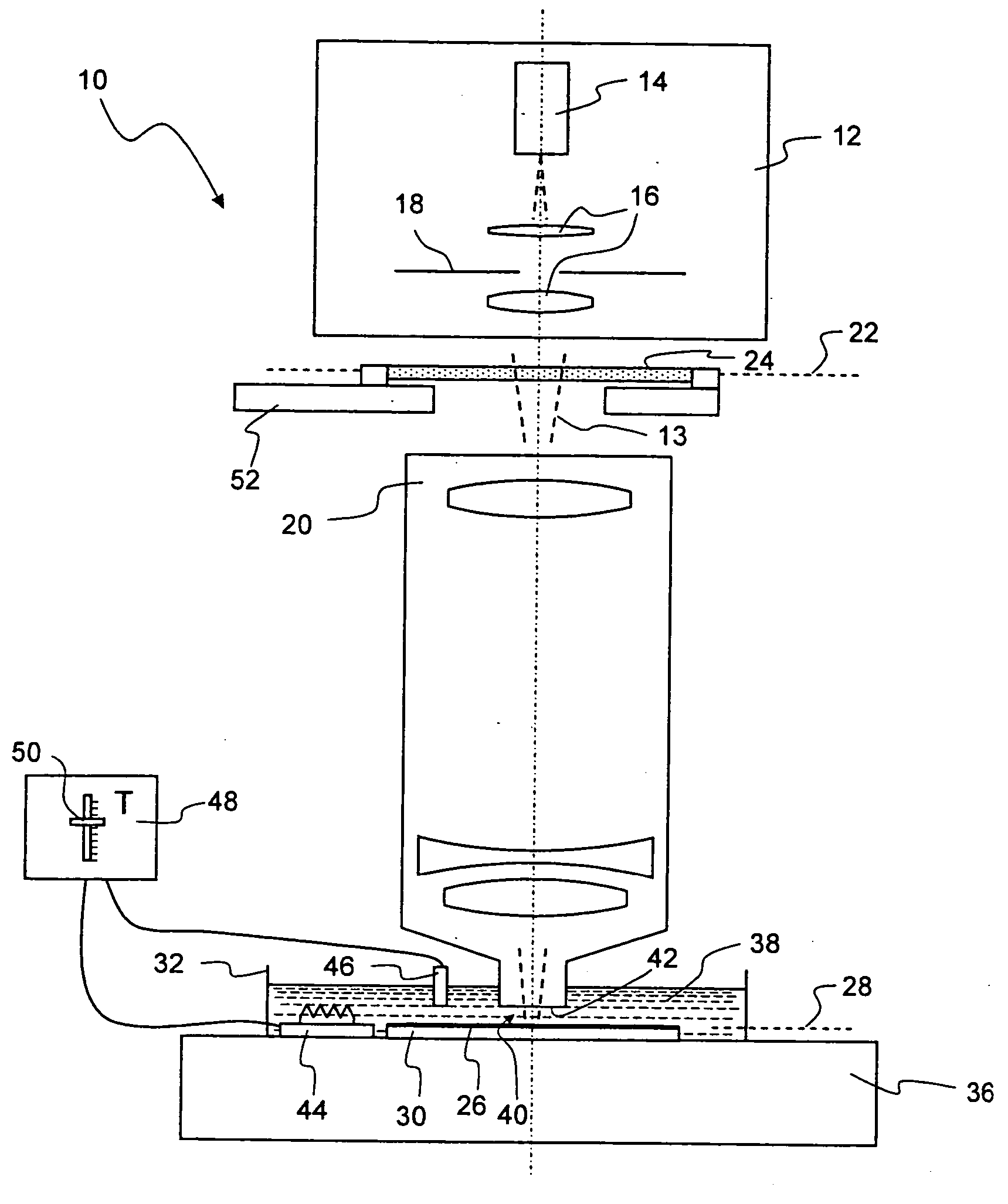Method for improving an optical imaging property of a projection objective of a microlithographic projection exposure apparatus
a technology of exposure apparatus and projection objective, which is applied in the direction of microlithography exposure apparatus, printers, instruments, etc., can solve the problems of difficult temperature change, significantly harder to set a homogeneous temperature distribution throughout the optically active volume, etc., and achieve the effect of improving the optical imaging properties of the projection objective even more easily and effectively
- Summary
- Abstract
- Description
- Claims
- Application Information
AI Technical Summary
Benefits of technology
Problems solved by technology
Method used
Image
Examples
Embodiment Construction
[0032]FIG. 1 shows a microlithographic projection exposure apparatus, denoted in its entirety by 10, in a longitudinal section. The projection exposure apparatus 10 comprises an illumination system 12 for generating a projection light beam 13, which includes a projection light source 14, illumination optics indicated by 16 and a diaphragm 18.
[0033] The projection exposure apparatus 10 furthermore comprises a projection objective 20 which projects a reduced image of a mask 24, arranged in its object plane 22, onto a photosensitive surface 26 arranged in an image plane 28 of the projection objective 20. The projection objective 20 contains a multiplicity of optical components, only some of which (not dealt with in detail) are represented by way of example in FIG. 1.
[0034] The photosensitive surface 26 may, for example, be a photoresist which is applied on a support 30, for example a silicon wafer. The support is fastened on the bottom of an open-topped container 32 with the shape of...
PUM
 Login to View More
Login to View More Abstract
Description
Claims
Application Information
 Login to View More
Login to View More - R&D
- Intellectual Property
- Life Sciences
- Materials
- Tech Scout
- Unparalleled Data Quality
- Higher Quality Content
- 60% Fewer Hallucinations
Browse by: Latest US Patents, China's latest patents, Technical Efficacy Thesaurus, Application Domain, Technology Topic, Popular Technical Reports.
© 2025 PatSnap. All rights reserved.Legal|Privacy policy|Modern Slavery Act Transparency Statement|Sitemap|About US| Contact US: help@patsnap.com



